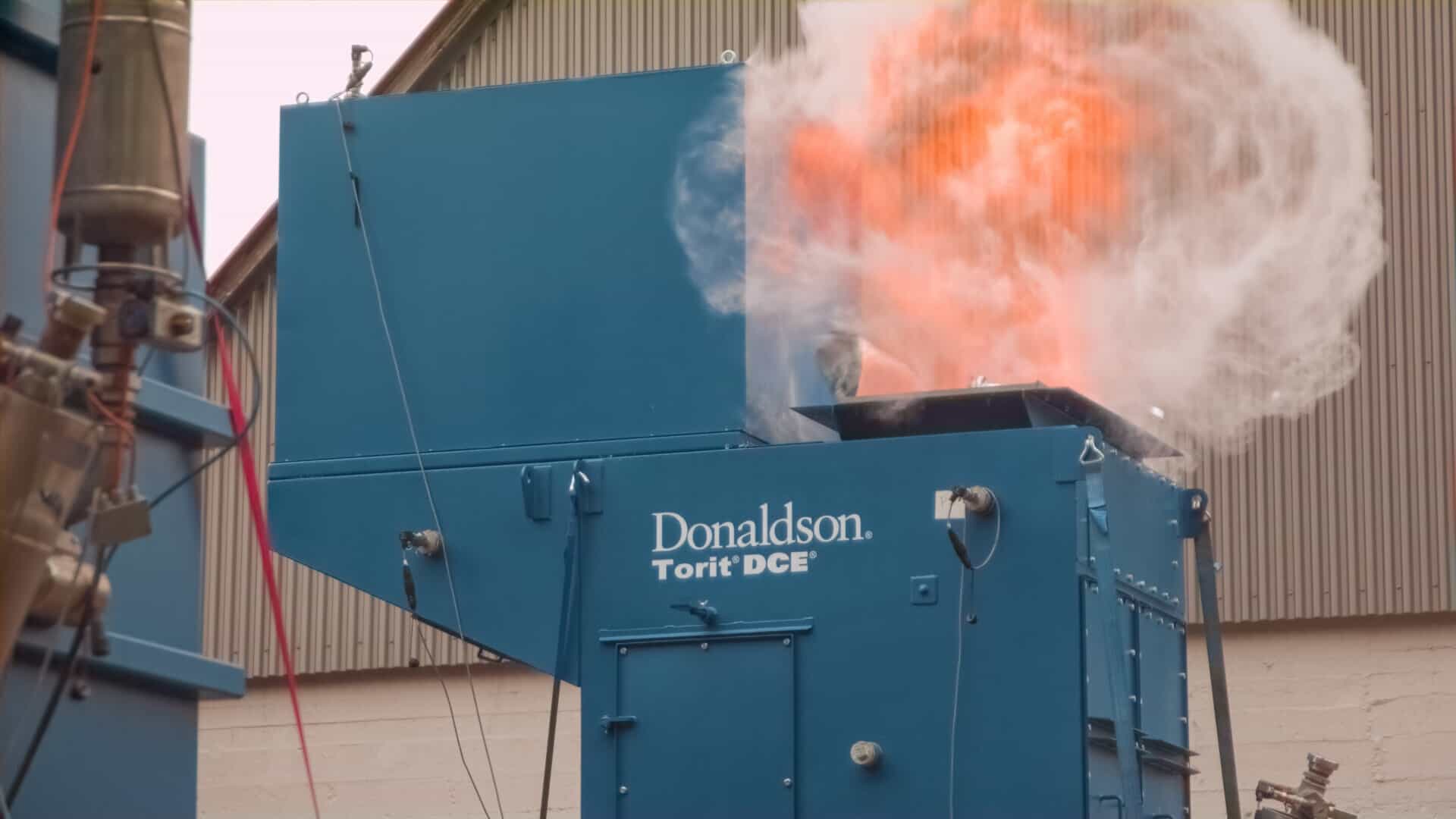- Identify at-risk areas within your building, rooms, workspaces and process.
- Make safe handling and process improvements to reduce the risk of combustion.
- Design explosion prevention, mitigation and protection systems for your unique hazards.
A variety of dust tests may be performed to provide different types of essential data.
Dust testing often begins with a Screening Test, also known as a Go/No-Go test, which answers the question of whether the dust is indeed explosive. The data is used to identify which materials throughout your process are susceptible to an explosion.
A Severity Test determines how explosive the dust is if combustion were to occur. This test calculates the dust’s Kst (rate of pressure rise) and Pmax (maximum pressure), which is critical to have documented when designing any necessary explosion protection systems.
The Minimum Explosible Concentration (MEC) and Limited Oxygen Concentration (LOC) tests help identify where dust explosion hazards may exist. The MEC indicates how little concentration of dust is needed for combustion, and the LOC is the same but with oxygen.
Finally, the Minimum Ignition Energy (MIE), Minimum Ignition Temperature (MIT) and Minimum Auto Ignition Temperature (MAIT) determine the sensitivity of the dust to an ignition source: spark energy, surface temperature and heated air, respectively.
Armed with this information, process improvements may be made to your facility to reduce the risk of ignition. For example, let’s say the tested dust’s MIT is 1000℃. An explosion safety consultant can work with your facility’s engineers and safety managers to identify any hot spots or surfaces that exceed the dust’s MIT. Once those areas are documented, measures may be taken to either reduce the temperatures of those hot surfaces or to monitor them to ensure they don’t exceed the dust’s MIT.
This strategy is called “explosion prevention.” However, preventing combustion is rarely guaranteed, so “explosion mitigation” may also be recommended in the form of explosion vents, suppression, and valves to protect against the worst-case scenario. When designing these systems, this is where the data generated from the Severity Test is needed, which will affect various design elements such as how far away from the vessel should explosion isolation valves be placed or how much space is required for an explosion vent.
If you need help with testing your dust, interpreting a previous dust test report, performing a risk assessment to identify your hazards or general consultancy, Fike’s global team of experts are here to address any of your needs regarding explosion protection.











































